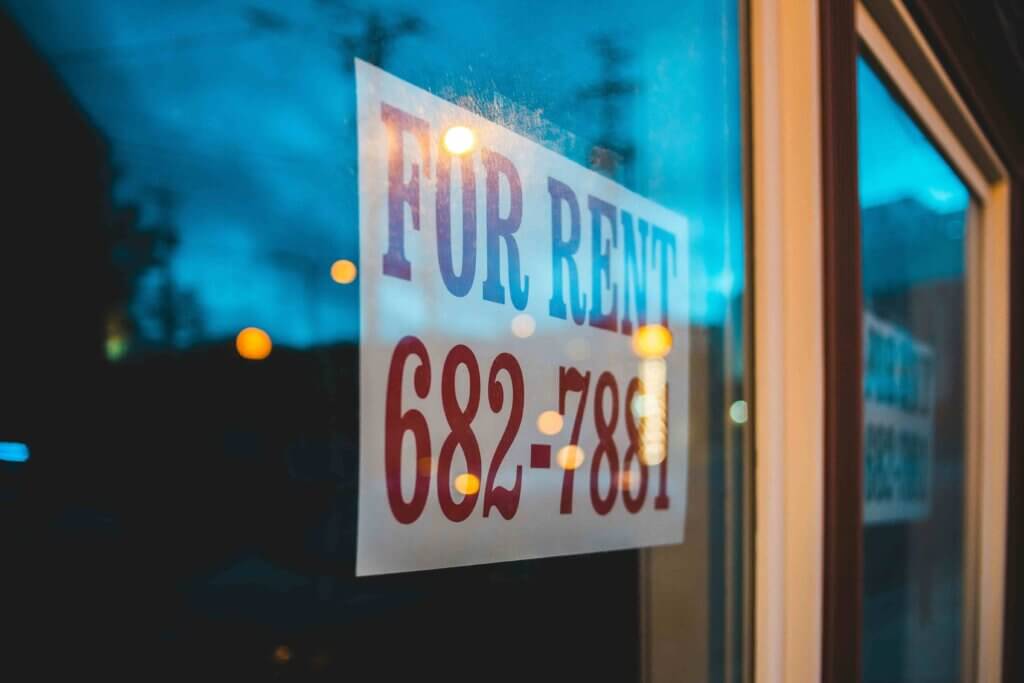Your financial story is yours to write.
And smart debt management is one of the most powerful tools you have to shape the plot.
If you’re struggling with debt, you’re not alone. Every day, millions of people find themselves caught in a debt cycle they never planned for. One unexpected expense leads to another, and suddenly it feels like you’re in way over your head.
In this article, we’ll help you reclaim your role as the author of your money story. We’ll explore how debt cycles begin, the warning signs to watch for, and practical steps you can take to turn things around—and pen a financial narrative with a happy ending.
What Is the Debt Cycle?
A debt cycle—also called a debt spiral or debt trap—happens when borrowing leads to more borrowing. It begins when you spend more than you earn, often due to surprise expenses, lifestyle changes, or income loss.
Taking on debt isn’t necessarily bad—in fact, it can help you build credit. When you do it responsibly, you borrow only what you can afford to repay, typically for planned purchases or true emergencies, and pay off the balance quickly to minimize interest charges.
For example, you might use a credit card for holiday shopping and pay it off within 2-3 months by temporarily cutting other expenses.
Now, imagine you came across a great deal for a new television. With no savings to pay upfront, you use your credit card, planning to pay it off over time. You can manage the minimum monthly payment, so it seems like no big deal.
Before you’ve made progress paying off the television, your car breaks down. Now you’re facing another hefty expense with limited options:
- Use a different credit card (adding another monthly payment).
- Take out a personal loan (possibly with high interest).
- Delay other important payments to cover this cost.
This is how the debt cycle begins: One expense leads to another, and soon the minimum payments become difficult to manage. In the meantime, your income stays the same.
As these payments eat up more of your monthly budget, you have less available for day-to-day expenses. Eventually, you might need to use credit for groceries or utilities—expenses that you should be able to cover without borrowing.
Understanding the Stages of a Debt Cycle
Debt cycles don’t happen overnight, and it can be difficult to tell when you’re in one.
In fact, Americans as a whole are struggling to pay off rising debt. And many don’t recognize the signs of a debt cycle until they’re several stages in, if at all.
The first thing to understand is that there’s no shame in finding yourself in this situation—financial challenges can happen to anyone, no matter how carefully you plan.
That said, understanding how a debt cycle typically progresses can help you identify where you are and take steps to regain control.
Let’s take a look at an extreme example. Here’s how Sarah, a dental hygienist who experienced an unexpected medical emergency, got caught in a debt cycle.
Stage 1: Spending Exceeds Income
Sarah has always been careful with money, paying her bills on time and maintaining a small emergency fund. When she falls and hurts her back, requiring an MRI, specialist visits, and physical therapy, she’s left with medical bills she hasn’t budgeted for.
Sarah drains her emergency fund, then puts the rest on her credit card, planning to pay off the balance in a few months. But the pain makes it difficult to work her regular hours, reducing her income.
Like Sarah, many people don’t enter a debt cycle through carelessness—it can begin with a legitimate emergency that isn’t in their budget. This first stage isn’t about poor financial habits; it’s about facing costs that simply outpace your current income.
Stage 2: Debt Increases
Three months later, between making minimum payments and charging co-pays for weekly physical therapy to the card, Sarah’s credit card balance hasn’t decreased much.
Sarah’s back is improving, but now her car needs brakes—an expense she can’t put off. With her credit card already nearly maxed out, she applies for a new credit card with a short-term zero-interest promotional rate.
She now has two credit accounts to manage, each with different payment dates and terms.
This stage often catches people by surprise. Despite making regular payments, the combination of snowballing interest and new expenses means the total debt continues to grow.
Stage 3: Missed Payments and Late Fees Pile Up
As Sarah juggles her medical bills, credit card payments, and daily expenses, an automatic subscription renewal she forgot about hits her nearly empty checking account. Her rent check bounces, resulting in fees from both her bank and her apartment complex.
The timing couldn’t be worse: These unexpected fees cause her to miss the minimum payment on her original credit card. Now she’s facing a late payment charge, plus her interest rate jumps as a penalty. In only a week, Sarah has racked up multiple fees, pushing her further into debt.
During this stage, the debt cycle gains momentum. Small financial setbacks trigger consequences such as late fees and penalty interest rates, making it harder to catch up. Many people feel a growing sense of anxiety, knowing they’re falling behind despite their best efforts.
Stage 4: Debt Grows and You Become Credit Dependent
Several months into her financial challenges, Sarah’s credit cards are almost maxed out, and the promotional period on her second card has ended. A higher interest rate means even less of each payment goes toward reducing the principal balance.
When her roommate moves out unexpectedly, Sarah uses a personal loan to cover moving to a smaller, less expensive apartment, adding yet another monthly payment. She finds herself using her credit card for groceries and gas—basic necessities she used to pay for with cash.
Sarah’s story shows how debt dependency evolves: What begins as a single emergency expense gradually transforms into relying on credit for everyday living.
This dependency creates a painful paradox: The more you need credit, the less available credit you have and the more expensive it becomes to maintain your debt.
Stage 5: Financial and Emotional Stress Take a Toll
Months of financial strain begin to impact every aspect of Sarah’s life. She lies awake at night worrying about her bills. The stress has affected her concentration at work and strained her relationships.
She feels embarrassed about her finances and reluctant to discuss them with friends and family. Some days, checking her account balances triggers such anxiety that she avoids it altogether.
These feelings are common, and experiencing them doesn’t mean you’ve failed. You’re not alone: 86% of Americans report being stressed about debt, negatively impacting their health and well-being.
Understanding debt’s emotional toll is an important first step toward making positive changes, including taking action before the cycle progresses.
Signs of a Debt Cycle
Here’s the thing: You might not realize you’re in a debt cycle until it starts affecting your finances and emotions.
While the stages above may seem clear cut, financial challenges aren’t always obvious. In fact, Sarah’s example above is pretty radical. But it can start with small expenses and debt that piles up.
Recognizing these signs of a debt cycle can help you make some key changes before debt becomes overwhelming:
- You’re living paycheck to paycheck: Your bank account gets close to zero by the end of each pay period, and you have little to no savings for unexpected expenses.
- You’re using credit cards to pay for necessities: If you regularly need credit to cover basic expenses like groceries, utilities, or rent, you may be spending more than you earn each month.
- You’re only making minimum payments: While minimum payments keep your accounts current, they barely cover the interest charges, meaning your actual debt isn’t getting smaller.
- You’re juggling bills: You find yourself choosing which bills to skip this month, postponing some payments to make others, or struggling to make ends meet.
- Your debt payments take up too much of your income: A large portion of your monthly income goes toward paying debts, leaving little for other expenses or savings.
Experiencing one or two of these signs doesn’t necessarily mean you’re in a debt cycle, but if many of these sound familiar, it may be time to take a closer look at your financial situation.
How To Escape a Debt Cycle
If Sarah’s debt cycle story hits home, you might be wondering if there’s a way out.
The good news? There absolutely is. People turn their debt stories around every day, and with the right approach, you can become the author of your financial comeback story too.
Breaking free of a debt cycle starts with small steps, and each step in the right direction brings you closer to financial stability and peace of mind. Small actions today can lead to significant improvements in your financial situation over time.
These strategies can be tackled in any order, but each can help move you toward regaining control of your finances.
Acknowledge Where You Are
Again, recognizing that you’re caught in a debt cycle isn’t a sign of failure—it’s the first step toward positive change. You’re not alone. Many people get into debt due to circumstances beyond their control like medical expenses, job changes, or family emergencies.
Being honest with yourself about your financial situation takes courage. It also creates opportunities to make meaningful improvements.
Create a Budget That Works For You
There are many ways to budget, and none is better than the rest. It comes down to which works for you. Choose a budgeting strategy that you can implement and maintain.
You don’t need fancy spreadsheets: A simple notebook or your phone’s Notes app works just fine.
Keep tabs on your daily spending for two weeks to get a clear picture of where your money goes. From there, you can create a realistic budget that mirrors your actual spending habits and modify it as needed as your life and circumstances change.
Reduce Your Expenses
Trimming your living expenses as much as possible is critical to getting out of the debt cycle.
One helpful guideline you can use is the 50/30/20 rule: Dedicate 50% of your monthly income to needs like housing and food, 30% to things you want, and 20% to savings and paying off debt.
Increase Your Income
Making extra money can help you get out of debt faster.
Consider selling items you no longer need, picking up occasional overtime or a part-time job, or exploring a side hustle. Even small amounts of extra income can add up when put toward your debt payments.
Get Professional Help
Credit counseling agencies provide free or low-cost advice and personalized plans. Look for non-profit debt organizations that can review your situation and suggest solutions. They can help you:
- Understand your options for managing your debt.
- Negotiate with creditors on your behalf.
- Create a plan that works for you.
- Learn strategies for avoiding future debt cycles.
Taking this step might feel intimidating, but professional guidance can help you when you’re overwhelmed, and give you a clear path forward.
Your Path to Breaking the Debt Cycle
By understanding how debt cycles work and implementing smart strategies to get them under control, you’re taking charge of your financial future.
But getting a handle on debt is just one chapter in your story—not the whole book. Each positive step you take adds to your storyline of financial resilience. Focus on progress rather than perfection, and celebrate the milestones along the way.
At Kudzu, we’ve designed tools specifically to help you take charge of your finances.
Our SpendSense Alerts notify you when you’re approaching spending limits you’ve set—helping you stay mindful of your spending habits and avoid the overspending that often triggers debt cycles.
Savings Habits makes it easy to automatically build your emergency fund through regular transfers, helping you create a financial buffer to prevent unexpected expenses from pushing you into debt.
Ready to take control of your spending habits and break the debt cycle? Download the Kudzu app today and start building healthy money habits.



